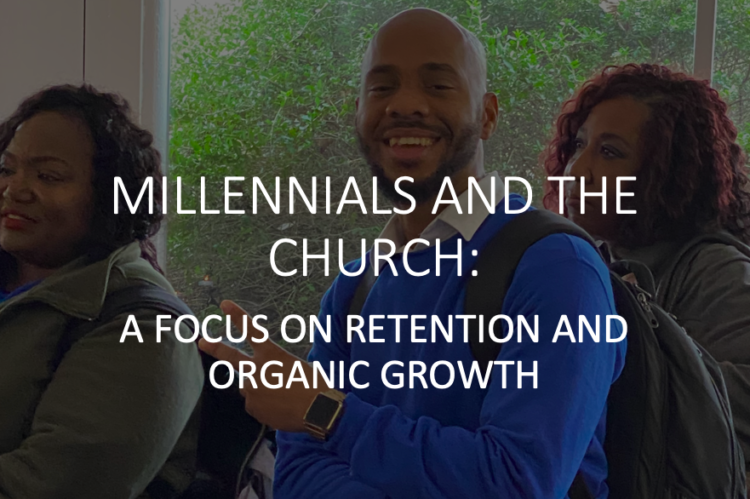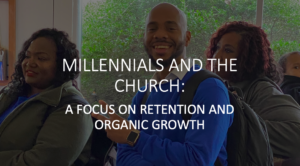THE PRESSURE TO GROW
It is an intimidating time to be the pastor of a church; frightening even. Along with the spiritual responsibility of caring for the souls of the congregants, pastors, unlike any other time in history, are faced with external pressures of administrative oversight, staffing (or the lack thereof), cultural orchestration, fundraising and the most challenging task being growing the church.
Pastors are expected to grow the church and the church expects to be grown, yet, both parties often find this objective easier said than done. Societal culture has strengthened its grip on the church by asserting its affirmation that success, in America, is based on numbers. The bigger the numbers the bigger the pedigree; the lower the numbers the less we could care.
To combat this cultural reality, pastor’s country-wide have been stressed with the task of creating evangelism strategies that will lead new and returning believers through the doors of the church and into their designated pew. In this quest to incite growth from the outside in, pastors have been encouraged to place a great amount of attention on their Millennial demographic, because the health of the church today and tomorrow has and will fall upon the shoulders of the Millennial generation. Millennials are unique, in that, they are both the church of now and the church of the future; they are both the young adults and emerging adults. This heavy emphasis upon Millennials’ impact has caused a cultural bidding war with Millennials at the center.
THE MILLENNIAL DILEMMA
If you google ‘Millennials and the church’ a wealth of resources, articles, blogs and op-eds will pop up, but much of the content rings the same. The content concerning this subject is saturated in all the varying reasons why millennials are leaving the church. You come across themes and articles like, “Millennials are Abandoning the Church,”[1]
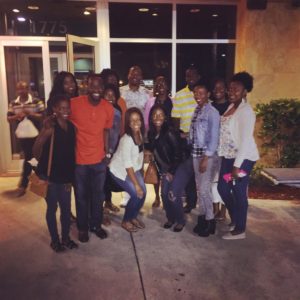 “What Millennials are Looking For”[2] and “Millennials are the None Generation.”[3] The cultural assertions are that the Millennial generation lacks significantly in participation, engagement and overall commitment to the church. In fact, Millennials have developed a cultural reputation as the ‘none’ generation. The connotation is that Millennials may very well be spiritual, but do not subscribe to any religious identification whether believer, agnostic or atheist. The blitz of negative press against the Millennial generation, as it pertains to faith and ecclesial commitment, have ignited a desire in me to take a deep look at patterns of Millennials and faith. I suppose my curiosity is more of a concern. As a lead pastor and a Millennial, I live at the cross intersection of loving God’s church and loving my generation.
“What Millennials are Looking For”[2] and “Millennials are the None Generation.”[3] The cultural assertions are that the Millennial generation lacks significantly in participation, engagement and overall commitment to the church. In fact, Millennials have developed a cultural reputation as the ‘none’ generation. The connotation is that Millennials may very well be spiritual, but do not subscribe to any religious identification whether believer, agnostic or atheist. The blitz of negative press against the Millennial generation, as it pertains to faith and ecclesial commitment, have ignited a desire in me to take a deep look at patterns of Millennials and faith. I suppose my curiosity is more of a concern. As a lead pastor and a Millennial, I live at the cross intersection of loving God’s church and loving my generation.
I therefore set out to embark upon a project that would shift the focus from the hopelessness I read in much of the available resources on Millennials and the church toward a more productive and encouraging nuance for pastoral leaders. The approach taken in this discovery is opposite that of the wave of content that is crashing on the shores of our culture. Instead of focusing on why Millennials are leaving the church and ultimately disassociating themselves from spirituality, I decided to focus on why Millennials remain committed to the church. My focus is on retention. Who (Millennials) is here, why are they here and how can we build and improve upon the ‘why’ in which draws them? This focus on retention is coupled with an intentional working of ecclesial organic growth. For general purposes, organic growth implies that an organism grows from the inside out rather than from outside sources.[4] A term that is generally associated with the business sector. Furthermore, I set out to design a project that reflected African American and Latino/a Millennials, being as though much of the available content about Millennials and the church is rooted in White congregations and culture.
METHODOLOGY
My project was rooted in three tiers of Millennial engagement. The first being a fifteen-question survey that was completed by 50 Latino(a) Millennials and 100 African American Millennials. This was an intentional target demographic being as though the reservoir of content about Millennial church affiliation lacks connectivity to minoritized contexts’. It is for this reason that this work directly reflects the ecclesial sentiments of the Black and Brown minoritized communities. These surveys were conducted with Millennials from across five states (FL, GA, AR, PA, DE).
The second tier of engagement came in the form of two focus groups consisting of 14 Millennials each. The bifurcation of these focus groups derived from the opportunity to give leadership in two different ecclesial contexts’, one in Florida and the other in Georgia. I designed two focus groups out of Georgia and Florida because I resigned from the first church I pastored in Florida and started my assignment of pastor at my current church in Georgia in the middle this doctoral matriculation. Data from the focus group in Florida w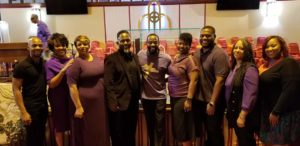 as already gathered before my departure and I took advantage of the opportunity to create a new focus group in Georgia for the purpose of establishing more content. The focus group in Florida consisted of 4 Latino/a persons and 10 African American Millennials. The Georgia focus group consisted of 1 Latino and 13 African American Millennials.
as already gathered before my departure and I took advantage of the opportunity to create a new focus group in Georgia for the purpose of establishing more content. The focus group in Florida consisted of 4 Latino/a persons and 10 African American Millennials. The Georgia focus group consisted of 1 Latino and 13 African American Millennials.
The focus groups were designed to create an atmosphere of open dialogue amongst Millennials who are active and regular church attendees. There were four sessions for each group at two hours per session. Intentionally, the focus groups were asked to meet off-site from the church’s campus with the goal to stimulate an organic conversation that was not shaped by an ecclesial ambiance. The four sessions were all built around specific thematic questions. They are as follows:
Session 1: Why do I come to church?
Session 2: What is it about my church that solicits my loyalty?
Session 3: Does my church provide space for holistic Millennial engagement?
Session 4: How can I contribute to making my church better?
A few of these sessions burrowed through our two-hour limit with rich sentiments from both long-time church goers and new disciples. The value of the sessions was so imminent that a long-term small group ministry was established with the Florida cohort, while the Georgia cohort too aspires to engage in long-term connectivity. All participants were given the topic and prompt for each session before arrival so that they could develop their responses in advance. Furthermore, they were all made aware that the conversations engaged would assist in the development of my doctoral work. Collecting the data concerning Millennial retention was key, but what became clear, as the sessions progressed, was the organic desire for millennials to share their religious sentiments alongside their peers.
The final tier of engagement used was one-on-one interviews with five Millennials from each focus group. There are some things people will share in private that they do not feel comfortable sharing in public, even if it is a safe space. The personal nature of direct interviews assisted in getting to the true grit of how Millennials felt about the ecclesial culture and to see their love affair with church a different way. In an attempt to not exhaust the interviews with redundant content, the interviews were structured by three dominant questions:
 What is great about your church?
What is great about your church?- What needs to be improved in your church?
- What draws your consistent attendance?
These three questions created room for dialogue that averaged 45 minutes per conversation. The reality is that Millennials that remain in church want to discuss these things because the general sentiment is that they want their churches to get even stronger with Millennial engagement. Using these methods and shifting attention from recruitment to retention, the pastoral leader can discover the true under current of Millennial life in their congregation.
WHY THE MILLENNIALS REMAIN
According to the data collected, I discovered that there are three predominant reason why Millennials remain connected to their ecclesial contexts’. I like to affectionately call them THE BIG 3 (Shout out to LeBron, Wade and Bosh during the Miami Heat era).
First, and from the onset, Millennials truly have a love for God and a deep desire to understand God’s plan and promise for their lives. With this sentiment, it should be good news to the pastoral leader that Millennials still prioritize a relevant Word from the Lord above all other reasons for their church attendance. According to my research, 89% of Black millennials assert that a relevant Biblical Word remains their primary grounds for church attendance, while 84% Latino(a) millennials share the same view. Furthermore, Millennials graciously respond to diversified methods of preaching and teaching. There are some who prefer a charismatic style of preaching and others who subscribe to more of stoic style, yet style is not of chief concern, but rather, relevancy is priority. Millennials prefer a relevant Word for their lives that can be easily understood and applicable for daily living.
Second, Millennials desire authentic connections within their faith communities. 49% of Black and Brown Millennials attest that relationships are the second most important contour of connectivity to the church behind applicable preaching and teaching. In fact, of the polled group 12% believe relationships are the most important part of the ecclesial commitment. Millennials see relationships as a priority in their spiritual journeying. They do not just want to sit next to their pew partner, but they want to know that person in a more communal and genuine way. Millennials have a deep seated longing to share much of their private journey, but need safe space and safe people in order to activate the disclosure. Additionally, Millennials want their leaders to be transparent and accessible, which is an indication that the church values relationships.
Rounding out the BIG THREE contours of connectivity for Millennials who remain committed to the church is work, or better phrased as volunteerism. It is important to remember that the youngest Millennial in America is now 19 years of age (with the understanding that the Millennial birth grouping is 1980-2000)[5], and therefore many of which are in their collegiate years and post-collegiate life. Young with young families, a scarce job market and a decline of working in the field of earned degrees, Millennials are taking longer to get financially
 stable than previous generations.[6] The importance in mentioning this is because the Millennial generation is not particularly known for its fiscal giving. With student loan debt, young families and unavoidable bills, Millennials, in current state, are strapped for cash. Yet, what Millennials may not be able to currently provide through the tithe, they can compensate for in time and talent. A part of the Millennial desire for connectivity is to be plugged into a faith community that serves each other in love and the outside community in like fashion. Millennials want to be connected to people, but they also want to be connected to opportunities to volunteer. 29% of Millennials polled believe that volunteer work is critical to the life of the church beyond relevant preaching and relationships.
stable than previous generations.[6] The importance in mentioning this is because the Millennial generation is not particularly known for its fiscal giving. With student loan debt, young families and unavoidable bills, Millennials, in current state, are strapped for cash. Yet, what Millennials may not be able to currently provide through the tithe, they can compensate for in time and talent. A part of the Millennial desire for connectivity is to be plugged into a faith community that serves each other in love and the outside community in like fashion. Millennials want to be connected to people, but they also want to be connected to opportunities to volunteer. 29% of Millennials polled believe that volunteer work is critical to the life of the church beyond relevant preaching and relationships.
FORGING THE FUTURE – USING ORGANIC GROWTH
There are many Pastors who are skeptical about the future of the church being in the hands of the Millennial generation. They look at the statistics and are inundated with concern. A 2015 Pew Research study finds that 35% of Millennials are unaffiliated with church or religion.[7] This is a daunting statistic being as though it is double that of the unaffiliated Baby Boomers at 17% and the Silent generation at 11%, while Generation X stands at 23%. It is clear why the church may be in fear. Yet, the Lutheran church helped me understand the numbers in better context. Julianna Shults and Mark Kiessling, while researching why Lutheran Millennials were falling away from the church wrote, “The lowered retention rate of boomers led to fewer infant baptisms. Current numbers show half of those baptized are confirmed, and thus a vast canyon is created between the number of Millennials in the LCMS and the US population. Millennials had not left the church; they were never there to begin with.”[8]
This inspired me! It helped me to see that if there are surging percentages of nonreligious and unaffiliated folk in previous generations (Gen X and Baby Boomer), it would follow that Millennial percentages would follow suit. What I am suggesting is that we are not necessarily experiencing a Millennial population that is mass exiting the church, but the reality is that many of these Millennials were never connected in the first place. That’s actually good news because now pastoral leaders have the ability to harvest a fresh crop of believers.
Pastoral and church leaders have the ability to take the methodology I have applied in this project to get the ecclesial and cultural pulse of the Millennials in their current context. Instead of pouring all of their resources into ‘recruitment’ they can shift some focus to ‘retention,’ which will assist in the development of what is working and discarding of what is antiquated. This intentional focus on the internal life of the Millennial context is what I like to call ecclesial organic growth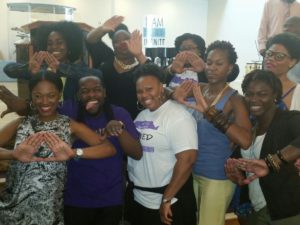 . The Corporate Finance Institute defines organic growth as such, “Organic growth is the process by which a company expands its own capacity. In an organic growth strategy, a business utilizes all of its own resources – without the need to borrow – to expand its operations and grow the company.”[9] When an organization learns how to effectively utilize the resources it has, it can expand without the addition of outside assistance. Evangelism, by nature, is outward focused. The goal of evangelism is to “win” or recruit new converts and congregants. Evangelism is a very important facet of the church, but if church leaders are to divert their attention to retention, from outward focused to inward focused, they can effectively position the church for growth that is inorganic (adding acquisitions to grow, i.e. new disciples, new Millennials). If pastoral leaders take meaningful time to curate and invest in the lives of Millennials that currently congregate in their context, the return will be exceedingly valuable.
. The Corporate Finance Institute defines organic growth as such, “Organic growth is the process by which a company expands its own capacity. In an organic growth strategy, a business utilizes all of its own resources – without the need to borrow – to expand its operations and grow the company.”[9] When an organization learns how to effectively utilize the resources it has, it can expand without the addition of outside assistance. Evangelism, by nature, is outward focused. The goal of evangelism is to “win” or recruit new converts and congregants. Evangelism is a very important facet of the church, but if church leaders are to divert their attention to retention, from outward focused to inward focused, they can effectively position the church for growth that is inorganic (adding acquisitions to grow, i.e. new disciples, new Millennials). If pastoral leaders take meaningful time to curate and invest in the lives of Millennials that currently congregate in their context, the return will be exceedingly valuable.
It is my prayer that this project will give pastoral leaders a biographical and cultural sketch of who Millennials are and the world in which they inhabit. Second, I hope to invite pastoral leaders to participate in the counter-cultural shift of ‘recruitment’ to ‘retention.’ Third, the data in the project can help pastors see more clearly the contours of connectivity that draw Millennials to the worship space consistently (BIG 3). While finally, helping pastoral and church leaders see the advantages of ecclesial organic growth. The harvest is plentiful, but the laborers are few!
[1] Christian Ellis. “Why Millennials Are Abandoning the Church.” CBN News, 2019 https://www1.cbn.com/cbnnews/us/2019/january/an-epidemic-why-millennials-are-abandoning-the-church
[2] David Kinnaman. “What Millennials Want When They Visit the Church.” Barna Group, 2015. https://www.barna.com/research/what-millennials-want-when-they-visit-church/
[3] Michael Lipka. “Millennials Increasingly Are Driving Growth of Nones.” Pew Research Center, 2015. https://www.pewresearch.org/fact-tank/2015/05/12/millennials-increasingly-are-driving-growth-of-nones/
[4] CFI Education Inc. What is Organic Growth? The Corporate Finance Institute, 2020. https://corporatefinanceinstitute.com/resources/knowledge/strategy/organic-growth/
[5] Thom Rainer and Jess Rainer. The Millennial: Connecting to America’s Largest Generation. (Nashville, TN: B&H Publishing, 2011), 20.
[6] Paul Taylor. The Next America: Boomers, Millennials and the looming Generational Showdown. (New York: Perseus Books Group, 2014), 109-110.[7]Michael Lipka. “Millennials Increasingly Are Driving Growth of Nones.” Pew Research Center, 2015. https://www.pewresearch.org/fact-tank/2015/05/12/millennials-increasingly-are-driving-growth-of-nones/
[9] CFI Education Inc. What is Organic Growth? The Corporate Finance Institute, 2020. https://corporatefinanceinstitute.com/resources/knowledge/strategy/organic-growth/
